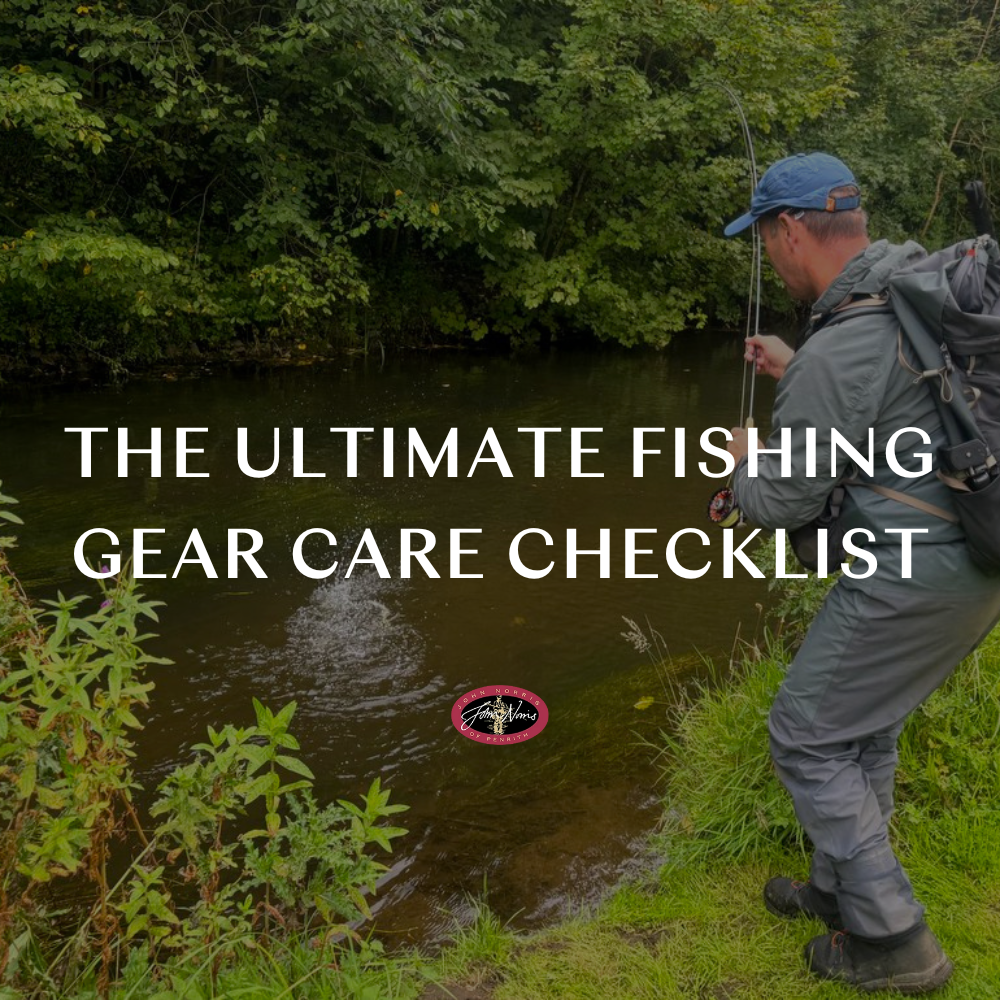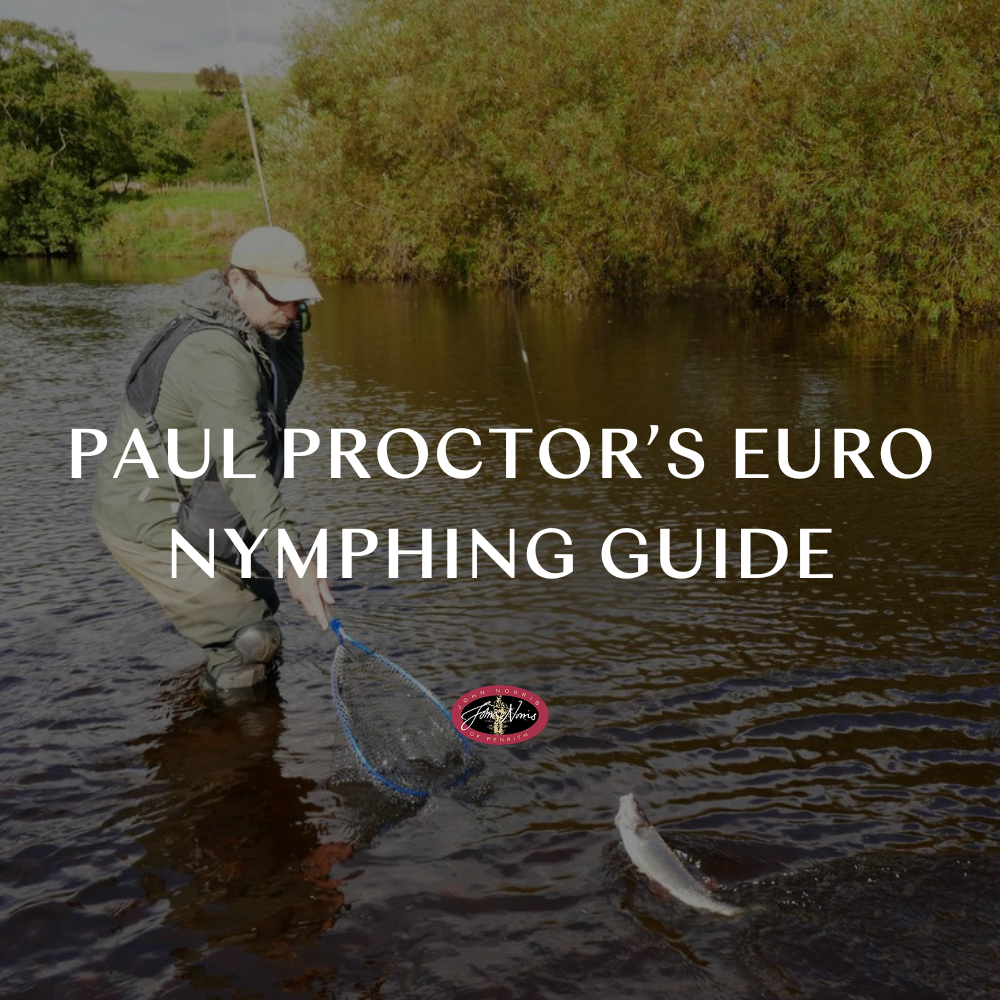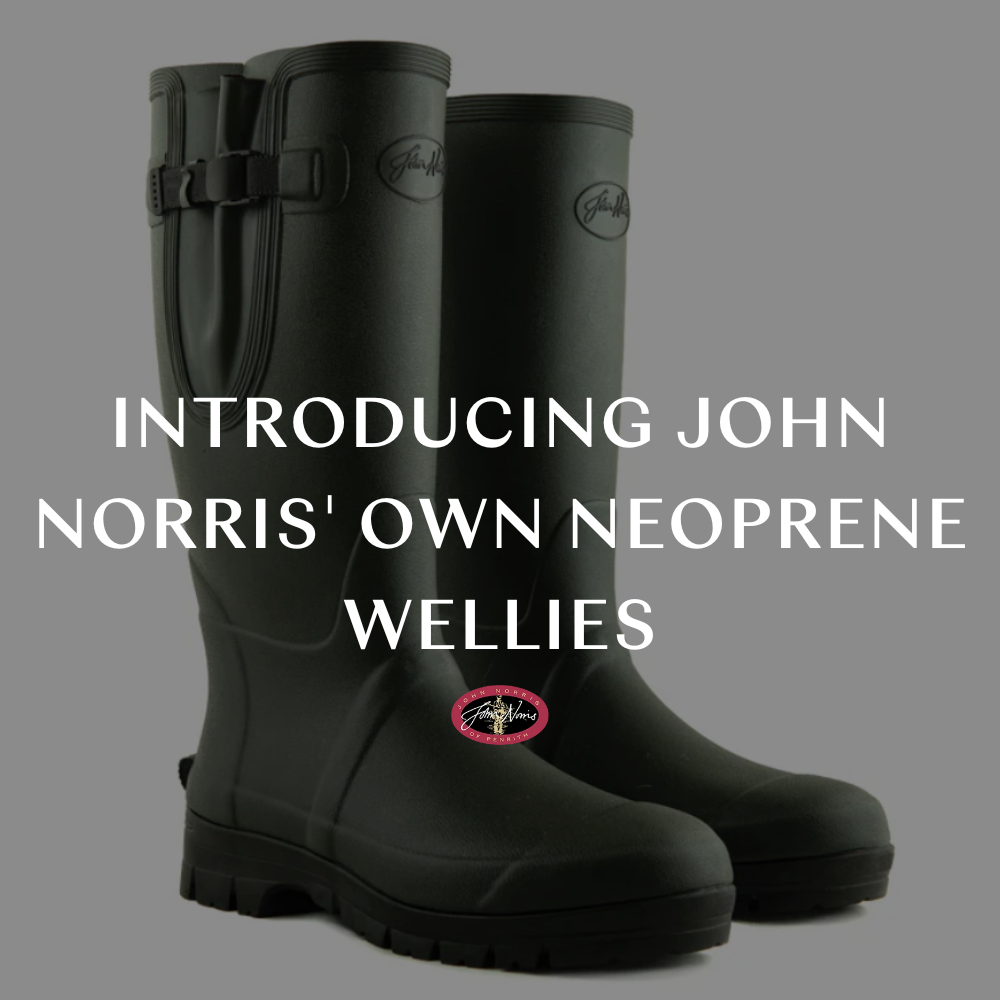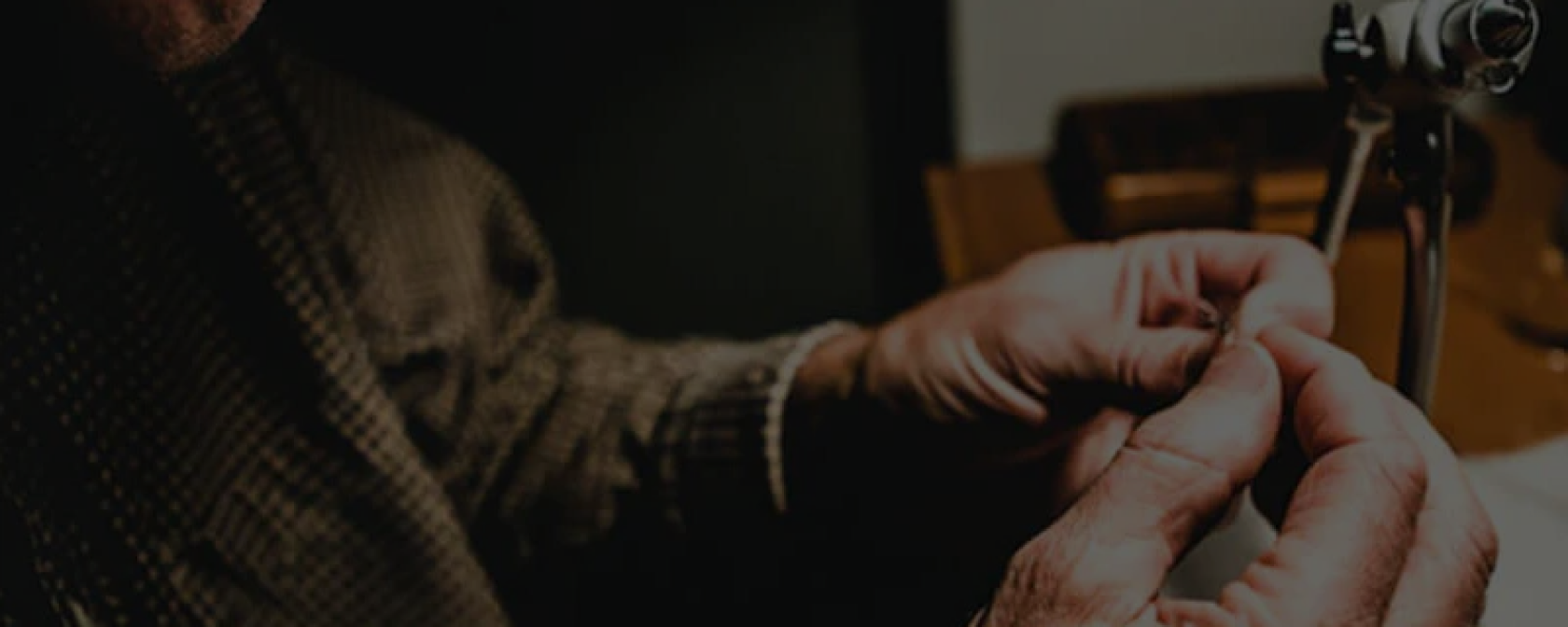The Ultimate Fishing Gear Care Checklist

Enjoy uninterrupted time on the water and reach your angling potential by following our fishing gear care checklist. Designed to help you get organised and guarantee your kit is in top condition, so you can focus on making the perfect cast and reeling in the catch of a lifetime. By inspecting, cleaning, and replacing your equipment as needed, you’ll set yourself up for success and avoid any unwanted setbacks this season.
Four Parts of your Fishing Gear you Should Check this Fishing Season:
- Rods and reels.
- Fly lines.
- Performance Clothing.
- Fishing Tackle
Rods and Reels:
Spend some time on basic cleaning and maintenance tasks so your fishing rods and reels are in prime working order this season. This will ensure that your performance levels aren’t impacted by external factors that could have been negated.
You should initially inspect the reel’s drag system for any clear damage, followed by the rod’s guides, reel seat, and handle for signs of corrosion. If these larger components are unaffected, remove and disassemble the fishing reel, taking the spool out if possible (be sure to take pictures for reference and follow the user guide as you go).
Gently clean your reel’s components with a soft brush and a microfibre cloth dampened with warm, soapy water. Be sure to dry each part thoroughly afterwards to prevent any rust from forming. If you have a bit of extra time, oiling the moving parts will not only extend the reel's lifespan but also enhance your casting and reeling performance. However, avoid adding lubricant or oil to a reel with a dry drag system. For fly reels with an open cork drag system, a light spray of GT85 will keep everything running smoothly.
With the reel and fishing line removed, disassemble the rod (if possible) and wash each part in a basin of fresh water with a microfibre sponge. Get into hard-to-reach spots, like the guides and reel seat, with a toothbrush or cotton bud so that no grime is left behind. Dry your rod with a soft towel and let it air dry in a warm room overnight to prevent material corrosion. This process will extend the lifespan of your rod and improve its performance levels.

Fly lines
Fly lines are the connection between you and a potential PB record breaker. Your line should be an asset to your fishing gear and not something that could ruin your chances of hauling in a whopper.
Before and during the fishing season, it’s important to perform quality checks on your fly line. After removing your spools, you should visually inspect the line and immediately disregard it if there’s any sign of damage or cracks. Check out the John Norris collection of fly lines to find the perfect replacement and ensure you’re fully stocked for the season ahead.
If it doesn’t need to be replaced, strip the line from its reel and soak it in warm, soapy water. After the dirt has been loosened, wipe the line with a microfibre cloth until it is clean, and apply a fly line dressing to improve performance and longevity. Carefully spool the line back on its reel and check that it hasn’t twisted or got pinched anywhere along its length; this can cause tangles or line breaks when casting or if put under tension.
It is also important to check that fly line attachments on your rig are fully operational. Inspect braided or welded loops, that connect leaders and tippets to the fly line, aren’t damaged and replace them if needed.

Performance Clothing
Staying dry and comfortable is key to making the most of your time on the water and keeping your focus sharp with every cast. Make sure your fishing attire still delivers full protection against the elements, so you can fish longer, harder, and without distractions.
To assess your waders, turn them inside out and shine a strong light through them in a darkened room; any light that leaks through is a sign of punctures or tears and further tests should be taken. Submerging waders in soapy water, then inflating them with a shop vac, means you can specifically identify leaks by the bubbles produced. If you find the damage is beyond repair, explore our exceptional range of fishing waders from cutting-edge brands like Guideline, Simms, and our exclusive line from Skwala.
It's crucial that your wading boots are fully hydrophobic and built to withstand the rugged underwater terrain. They need to deliver solid ankle support and reliable traction to keep you safe and performing at your best over rocky, slippery surfaces. After replacing any missing boot studs, carefully inspect your boots for wear and tear to determine if they're still up to the task this fishing season. If it’s time for an upgrade, be sure to check out our previous blog for expert tips on choosing the right fishing waders and boots for your needs.
When checking your waders and boots, don’t forget to inspect your waterproof jacket and trousers too. If they need reproofing, wash at 30 degrees with a wash-in waterproofing agent and tumble dry on a low-heat setting to activate the durable water repellent. Remember to check the specific properties and care instructions for your waterproof jacket and trousers so that no accidental damage is done.

Tackle Box
Though often overlooked, organising your tackle box can make or break your fishing trip. Take the time to clean out your boxes and trays to create a fresh, clutter-free foundation for your gear. Assign and label compartments for items like spare fly lines, hooks, flies, lures, sinkers, bobbers, and bait, ensuring everything is easy to grab when you need it. Don’t forget to make space for tools like scissors, hook re-movers, and pliers, as well as first aid supplies, so you’re fully prepared this season.
Whenever possible, refurbish your gear instead of buying new. Rusty hooks can be revived by soaking them in cola for a few hours and cleaning them with hot, soapy water. Check the barbs and sharpen them with a hook file if necessary to prevent a prized catch from slipping off. For flies and leaders, apply floatants or sinkants so they’re properly buoyant or repellent. And when replacing gear is unavoidable, be sure to get the best value with John Norris’s premium fishing tackle.
This season, be sure to check your fishing gear and attire against the criteria we’ve offered above. Take adequate steps to inspect kit and rejuvenate or replace fishing rods, reels, fly lines, performance clothing, and fishing tackle where necessary.
This maintenance should continue throughout the season so that your skills and overall angling experience remain at their best. Rinse and dry your rod, reel, and line after every trip and store them in a protective case in a temperate room that blocks direct sunlight. Check your fishing clothing routinely so that there are no mid-trip surprises and clean thoroughly after every outing to prevent mould and mildew build-up.
For more information and to browse our range of fly fishing gear, chat with our expert Penrith team in-store or visit online at John Norris today.










